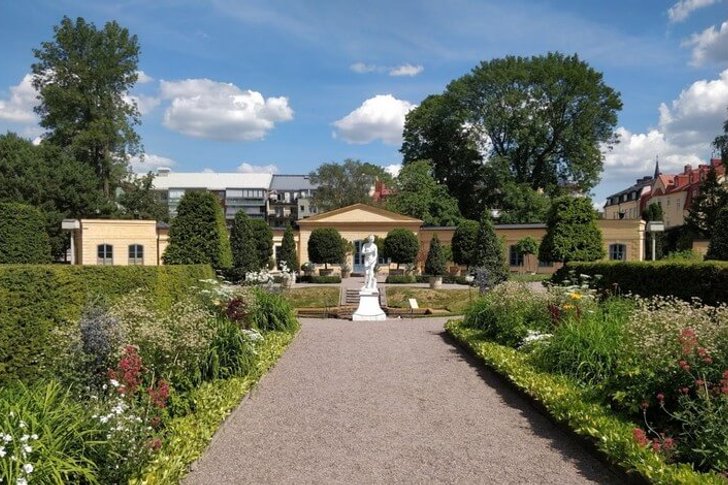Uppsala is one of the largest cities in Sweden. He remained pagan longer than others, although he eventually converted to Christianity. So the two cultural directions overlapped each other, which made the district interesting for tourists. Here you can see the ancient burial places of the Svei tribe, as well as the largest cathedral in Scandinavia.
The botanical gardens of the city deserve special mention. They not only represent collections of rare plants, but are also associated with the names of local scientists.
Modern architecture is represented by a large concert hall, which also functions as a conference center. In addition, there are museums of various directions and Uppsala University, which is one of the hundred best educational institutions in the world.
What to see and where to go in Uppsala?
The most interesting and beautiful places for walking. Photos and a short description.
uppsala castle
Built in the middle of the 16th century by order of King Gustav I. Under his sons, the castle was rebuilt, giving more features of the Renaissance. In the first half of the 18th century, the palace lay in ruins after a fire. Restoration and restoration almost destroyed the painting of the walls with biblical quotations. Nearby there is a baroque garden, which has been converted into a botanical one. Now the castle houses two museums and the city administration.
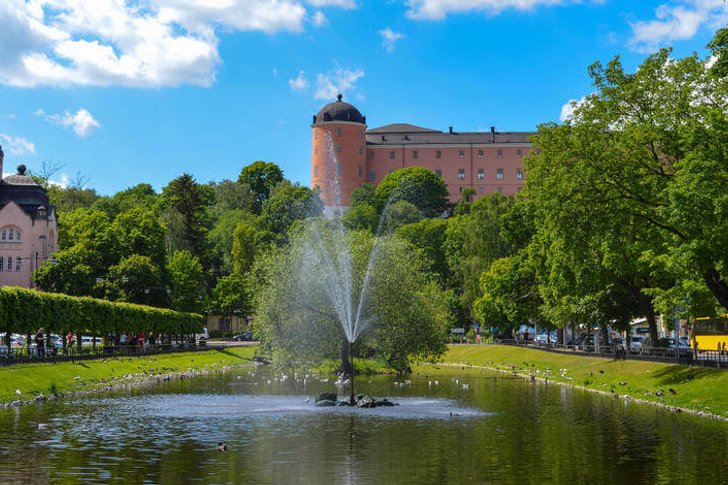
Old Uppsala
Here are the burial places of the Svei tribe. The total number of barrows is about 800. The periods are different, but the 3 largest are dated to the 5th-6th centuries. There are several versions associated with their appearance. Most likely, supreme rulers or outstanding warriors were buried here. Since the excavations were carried out several times, and the remains were transferred to other places, it is difficult to establish this for certain.
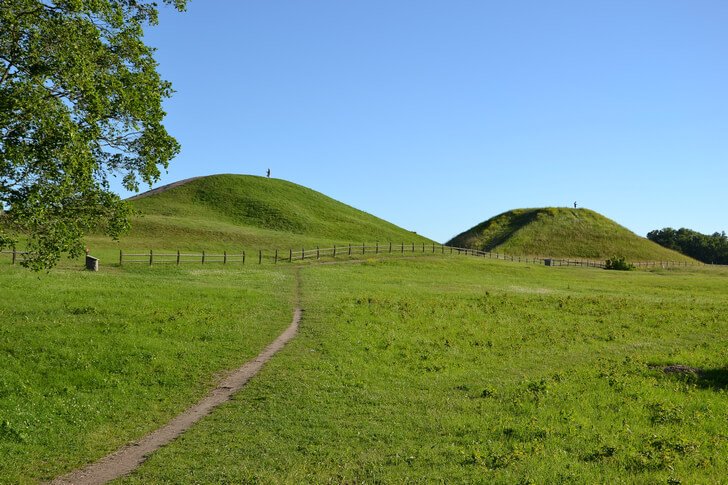
Uppsala Cathedral
It was built for a total of about 150 years. Rebuilding continued after 1435, when the cathedral began to receive parishioners. The medieval style changed to baroque, and then to gothic. Kings Gustav I and Johan III, Archbishop Nathan Söderblom, Nobel Prize winner and researcher Carl Linnaeus are buried here. The main relic of the Lutheran church is the shrine with the relics of St. Eric IX.

Uppsala University
Founded in 1477. The oldest university in Scandinavia. Consistently ranked among the top 100 higher education institutions in the world. The current building was built at the end of the 19th century. The local library boasts truly unique items, such as the diaries of Gustav Badin, who served at the court of 3 kings. It also has a collection of thousands of coins and has its own botanical garden.

Gustavianum
The museum was founded in 1997 and is located in the former university building. It was built in the 17th century in the Baroque style. The exposition is devoted to various scientific achievements and disciplines. The most valuable exhibits are associated with the names of prominent scientists. For example, visitors can see the Celsius telescopes, and the collections contain the manuscripts of Copernicus. An anatomical theater is equipped in the Gustavianum tower.
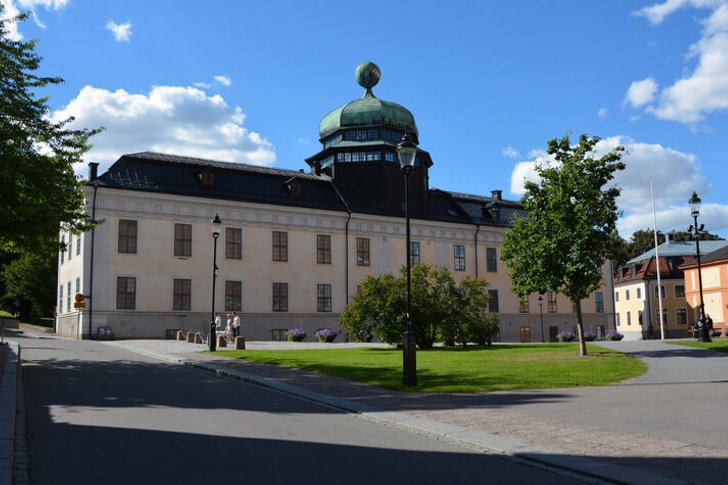
Linnaeus' Hammarby
It is located 15 km from the city. The estate has been known since 1937. In the middle of the 18th century it was owned by Carl Linnaeus. For the family of a naturalist and explorer, this place has become a summer residence. However, Linnaeus not only rested here, but also worked. For example, he grew in the garden the species of plants of interest to him. The situation in the house is preserved and tells both about the owners and about the era as a whole.
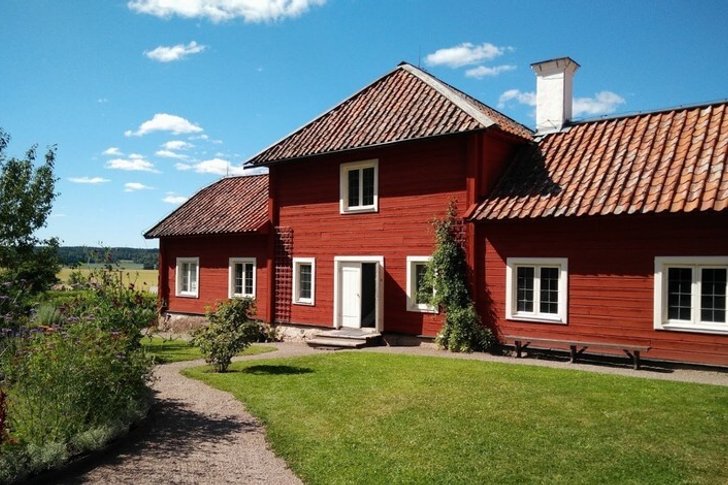
Bror Hjort Museum
Exists since 1987. The building itself was built in 1943. Bror Hjort, one of the most famous Swedish artists and sculptors, lived and worked here for a quarter of a century. The studio exhibits many of his paintings and other works of art. In addition, personal items were collected. The museum has a cafe and a souvenir shop, and temporary exhibitions are held in the attached building.
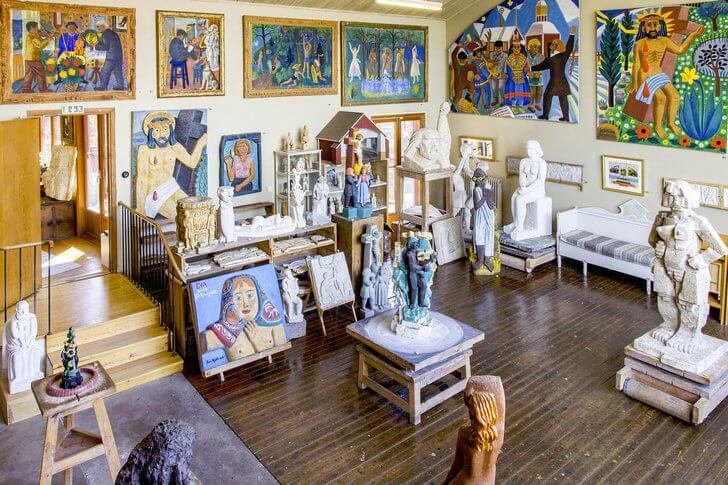
Uppsala Konsert
Opened in 2007. Prior to this, the project went through a series of public discussions. The building has an unusual shape - a cube with layers. About a third of the population considers it one of the symbols of the city, and the same number assign it such a role in the future. The concert hall, which is also a conference center, hosts artist performances and exhibitions. From here you have a view of Uppsala Castle and the Cathedral.

Botanical Garden
Located at Uppsala Castle. In 1807, the garden replaced the park complex. One of the reasons for its creation is the 100th anniversary of the birth of Linnaeus. Plants from the desert and rainforests are collected in one place. Thanks to the created conditions, many species coexist with each other, although you will not find anything like this in nature. Entrance is free, the garden is open all year round with rare exceptions.

Linnaeus garden
It is one of the oldest in Sweden. After its founding in 1655, it went through various stages of prosperity and decline. It was personally revived by Karl Linnaeus, after whom the garden is now named. At the suggestion of a naturalist, Karl Horleman, a famous architect, carried out a reconstruction. Linnaeus conducted research and lectures here. The garden was awarded a hit on a banknote of 100 crowns.
